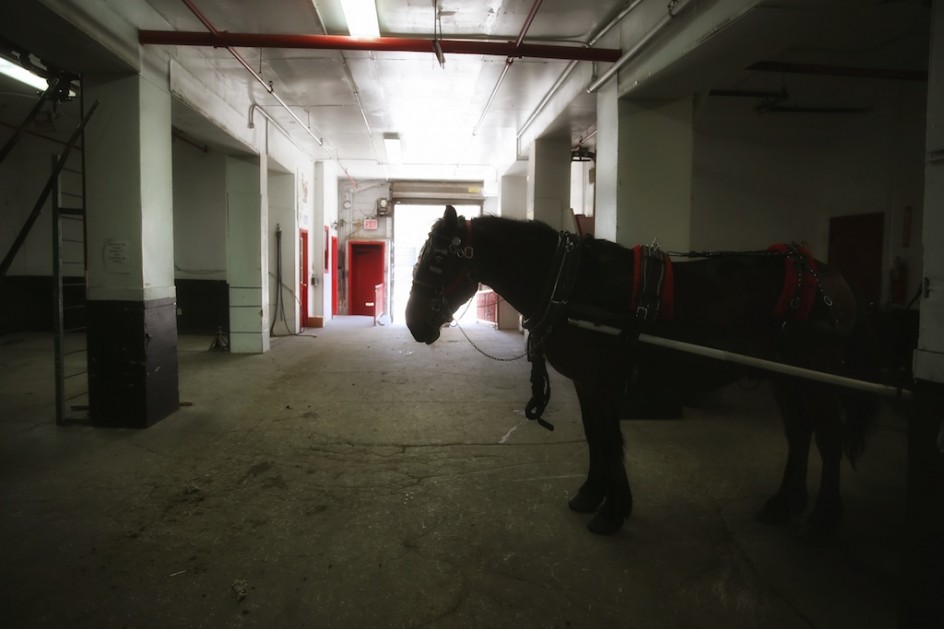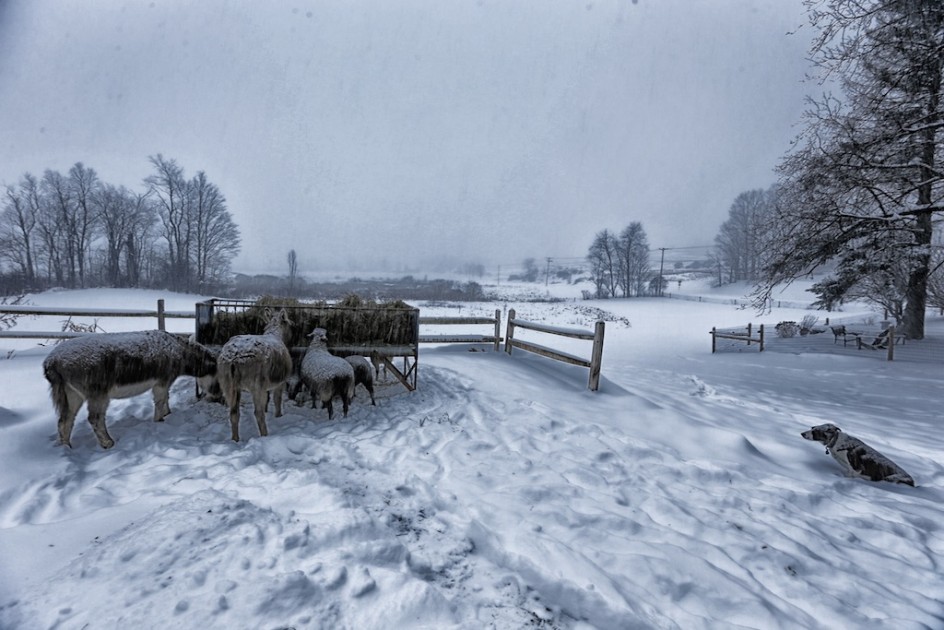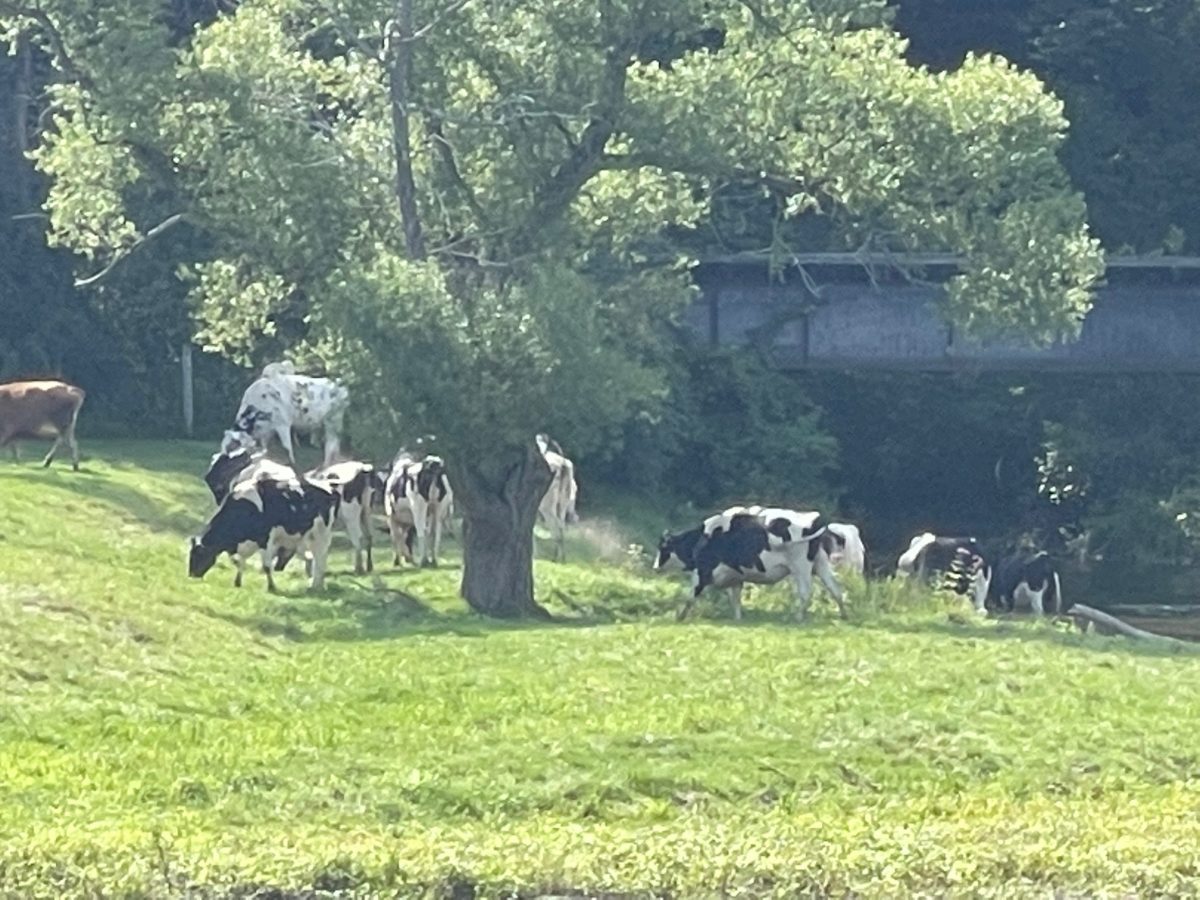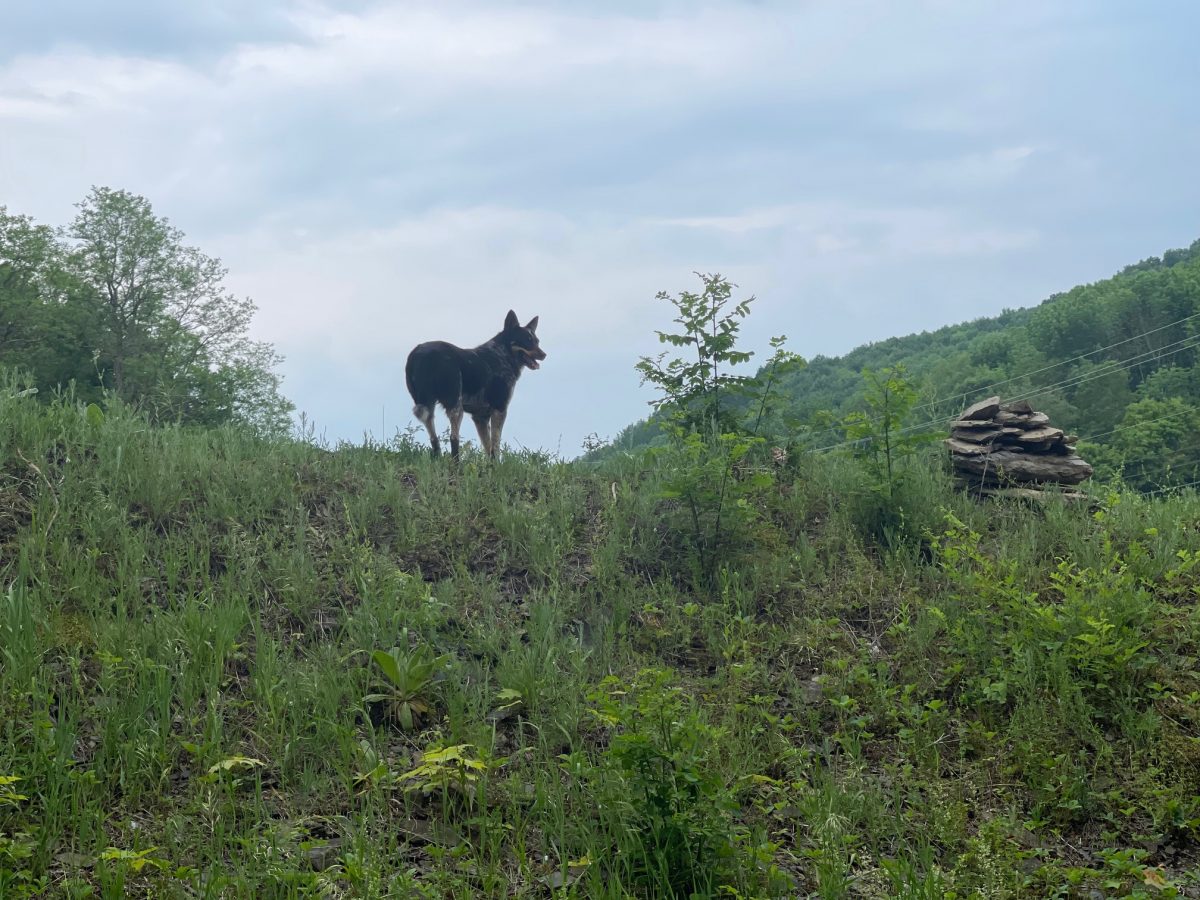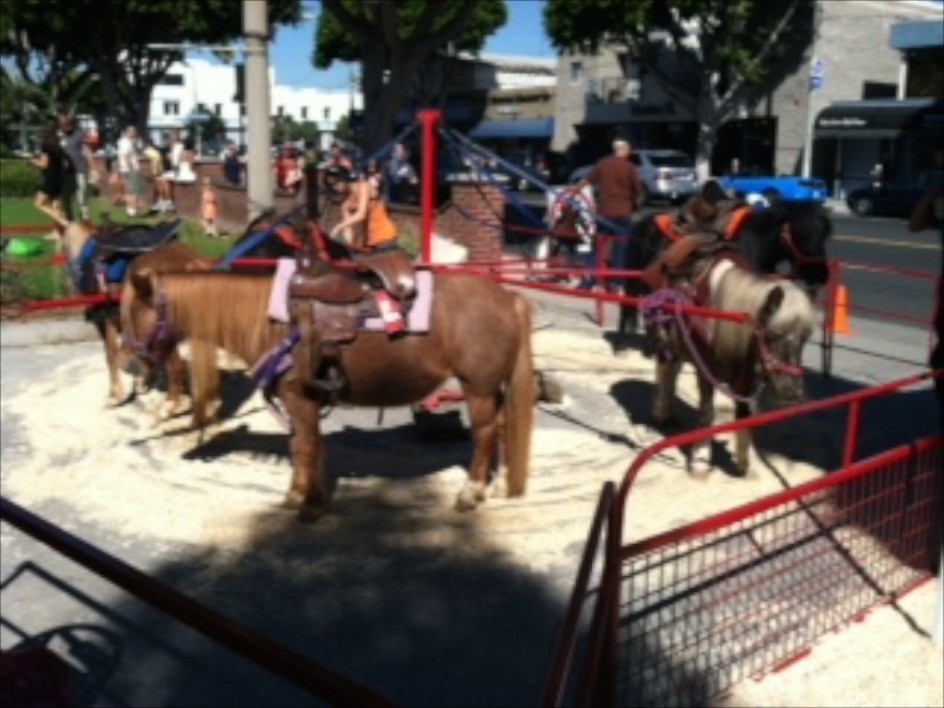
Tawni Angel is the latest victim of the hysteria against people who work and live with animals. She is in trouble. She faces the loss of her business and her animals as well as her reputation due to an ignorant and demonstrably false attack by people who call themselves animal rights activists but who seen to know nothing about animals or their needs.
She has been banned in precisely the same way the mayor of New York City and the so-called animal rights activists there seeks to ban the carriage horses. She has decided to fight back, for her rights, her way of life, her reputation, her animals, her sustenance and property. I believe she is also fighting for me, for my border collie, my donkey, my right to live with animals.
I first wrote about her several months ago, it was a piece called “Then, They Came For The Ponies.” It was sadly prescient. They did come for the ponies, and I am sad to say they will not stop there. If they can do this to Tawni Angel, they can do it to you and to me.
Angel was not seeking fame or notoriety, she loved her life and was grateful for it and worked very hard and honestly to get it. But it has been taken away from her, in the most unjust way.
So she has become a pioneer, perhaps even a hero, in the new social movement to save animals, to keep them in our world, and to define their rights and ours in a rational, loving and humane way. I don’t know her, and have not seen her ponies for myself, as I was able to do with the New York carriage horses. But I know many people who do know her, whose children have ridden her ponies. And I have seen much evidence in support of her. Many children wrote to me trying to save her and their pony rides. If Angel is ultimately driven away, these children – like the children who love the New York horses – will not likely get to ride ponies again or even see one.
I hope to meet Angel, to see her farm, to see her ponies, if she is able to keep them. She is a victim of an awful injustice, but she is standing in her truth, and in so doing, standing for everyone who loves animals and wishes for them to have a future in our world.
___
I received an announcement late last night that Angel, the owner of Tawnis Ponies and Petting Farm, Inc., has filed a defamation lawsuit in California Superior Court against animal rights activists who accused her of animal abuse earlier this year and who badgered the Santa Monica City Council into canceling Angel’s pony rides for children, held at the city’s farmer’s market. Suddenly, there was this idea that it was cruel abuse for ponies to give rides to children. The council action deprived Angel of her means of making a living, and damaged her reputation. No one wants to do business with an animal owner accused of cruelty and abuse, even if the charges have been proven to be totally false.
The assault on her pony rides has also threatened the life and future of her ponies (most rescue animals) who may find themselves in urgent need of hard-to-find new homes.
Angel and her ponies had been inspected at least three times last year by police and veterinarians and no evidence was found of any kind of abuse of mistreatment of her ponies. The stomach sinks a bit. Another person targeted who has done no wrong and committed no crime, more animals banished from contact with human beings who want and desperately need to see them, more cruelty to people in the name of animal rights. If the Santa Monica council members were awake, they would give Angel an award for keeping these animals in our consciousness and near our children. That would be a truly progressive act.
In America, the movement that claims to speak for the rights of animals often has no idea any longer about what they are like or need. They are seeking to redefine the very meaning of abuse outside of the law or any reasoned legal, medical, expert or social convention. They are increasingly cruel and abusive to human beings.The very lives of working animals depend on their finding work with humans, those that don’t are vanishing from our world at a horrifying pace. Last month, the World Wildlife Federation reported that half of the animals on the earth had vanished since 1970. People who believe in the rights of animals ought to first and foremost fight for them to stay alive and in our world.
Every cared-for animal we keep among us is precious, even sacred. But the movement that calls itself by the name of “animal rights” is removing and killing many and saving few.
You can follow this story for yourself, Google will take you there. Angel’s case is a classic example of the twisted morality of the contemporary animal rights movement: endangering animals in order to save them, driving them away from populated areas and the very people who might keep them alive. This is a movement that has no vision for protecting the rights of animals or the people who keep them. What happened to Angel is yet another travesty in the increasingly disconnected, Stalinist culture that goes by the name of animal rights.
The scenario is ritualistic, sadly familiar now, at least to me, a supporter of animal rights and someone who thinks of himself as progressive. Someone chooses a life with animals, a way to work with them, pay for their care and earn a living. Often they are following in the footsteps of their parents and grandparents, they have chosen work they love and a way of life. Suddenly, and usually without warning or any kind of due process, they are accused of criminal behavior – animal abuse and cruelty, greed and callousness. These people rarely have the money or resources to fight back against well-funded organizations who seem to mostly target the weak.
Fearless and ignorant politicians are panicked, and they have to choose between fighting for their lives at great expensive and trauma or giving up their animals, who often end up homeless or sent to slaughter.
Politicians, as politicians will, run to hide in their closets. Innocent people – almost always without the means or know-how to defend themselves – face the loss of freedom, their way of life, their reputations and their property without cause or do process, and this in the name of loving animals and progressive politics.
Angel started her business in 2003, she loves animals and especially enjoyed offering pony rides to children who rarely, if ever, get to see animals in their lives in their urban environment. Marcy Winograd, a former congressional candidate and someone who calls herself an animal rights activist, decided it was “torture” for ponies to be forced to give rides to children at the farmer’s market. She cited no evidence for this theory, no trainers, behaviorists, veterinarians. She simply decided it was so.
“There, every Sunday, six ponies – some of them dragging their feet, having trouble walking – are tethered to a metal bar and forced to plod for hours in tiny circles on hard hot cement, while bands, often loud, blare next to the ponies’ sensitive ears,” Winograd wrote in a statement. More than a thousand people signed petitions in support of Angel and her ponies and petting zoo. Winograd posted photos online, claiming to show that the ponies also had cracked hooves. Investigators found no evidence of cracked hooves.
She also wrote in her letters and petitions to the City Council that it was cruel and abusive for ponies to be used to provide entertainment to children.
The Santa Monica City Council initiated at least three separate investigations into the treatment of the ponies, and all three found the animals were healthy and well cared for. Angel and her husband own a five-acre farm and – according to all independent accounts – scrupulously care for their animals, the ponies run free all week when they are not giving rides to children or going to birthday parties. Giving rides is the way Angel supports her farm and cares for her animals. Without that revenue – she lives week to week, like most animal lovers, and she may not be able to keep them. That is perilous for the ponies, who will face a world where 155,000 horses are slaughtered each year in Canadian and Mexican slaughterhouses.
The conflict has many echoes of the controversy over the carriage horses in New York. Time after time, the police, regulators, health inspectors and veterinarians have founded the horses to be content, safe and healthy – none has found any sign of abuse of mistreatment, yet reality rarely seems to intrude on the people seeking to ban the horses.
It is the story now familiar to many thousands of animal people across the country. People who know and love animals have watched in shock and growing unease as the animal rights movement has run amok, trampling both on the true rights of animals and the rights of people. Almost invariably, the accusations are made by people with no understanding of animals and their needs, and no understanding of what abuse even is. Animals are disappearing from farms, circuses, Hollywood movie sets, farmer’s markets, private homes. Where do the animal rights people think all of these animals go?
On Sunday July 13, Angel’s husband, Jason Nester, called 911 to report that a group of protestors were blocking the sidewalk at the farmer’s market, protesting the pony rides. Sgt. Mike Graham, a former horse owner and the former supervisor of the Santa Monica Police Department’s Animal Control Unit, was sent to inspect the pony rides and look for evidence of animal abuse.
Upon arrival, Sgt. Graham said he was approached by Winograd and several demonstrators, who immediately began questioning him about what he saw, and asked if the horses were in the sun, drinking water, and free to move about the area.
Last night, I got hold of Sgt. Graham’s police report, these are his own words:
“I examined the ride set-up. The horses appeared in to be in good condition – their body weight appeared normal, their fur was clean and brushed, their manes and tails were brushed and healthy, the ground around them was clean and evenly flat, they walked on sawdust shavings, and there was no visible urine or feces. The equipment – saddles, bridles, and (thick) pads were in good condition. The horses were “quiet” and well behaved. I saw nothing to make me believe the horses were ill-treated, unhealthy, malnourished, injured, or in discomfort. The horses did not appear hot, were not sweating, and were on a timed (30 minute alarm,) water-break schedule.
I saw that as the horses walked in circles, their speed and disposition was constant and calm. Their path took them in and out of shade from the sun.
I answered Marci (Winograd’s) questions, shared with her my observations of the health and overall good condition of the horses, explained that they were in the shade an equal amount of time that they were in the sun, and told her that it was in fact “not” hot. (Horses live and work in places much hotter than coastal communities with cool ocean breezes.) I told her that the length of the “lead ropes” that connected them to the “hot walker” poles was long enough to give them head movement, but not long enough to allow them to turn around. (She wanted them to be free to turn around. I explain how inappropriate and unsafe that would be for the child riders if the horses could turn 360 degrees during the ride.)”
__
Angel was given no warning that the City Council was considering revoking her license. Council members agreed that there was no animal abuse, and only four were present, they voted to revoke her license because the controversy Winograd had sparked was “not right” for the city. Parents who had been taking their children to ride the ponies for years were stunned.
Angel, who had been following some of my writing on the carriage horses, wrote me a month ago. The lies, attacks, and bullying, she wrote, “has resulted in a loss for 300 kids a week and myself and my wonderful animals are out of work come May when my contract expires, the Council has rewarded (Winograd) for her relentless e-mailing, calling, writing, harassing the city to get rid of me, and it has worked.”
I believe in animal rights and have come to see that animals have no movement for their rights, only a fringe social movement that is disconnected from the real lives of real animals and estranged from the people who wish to keep them in our world and care for them.
Abuse is not the opinion of politicians or animal rights activists or people on Facebook. It is a crime, it refers to the grievious injury and torture of animals for no reason. I hope the New York Carriage Trade will take inspiration from Tawni and her refusal to be treated so shabbily and unjustly. The carriage horses have been defamed for years, accused without evidence of brutality, cruelty, greed, theft and wanton animal abuse. Since there is no evidence for any of these accusations, it seems the very definition of defamation, and their attackers have never been held accountable.
Tawni Angel is fighting on behalf of many victims, as well as the many true animal victims of abuse. Hers are not the animals who are abused, Angel is not an abuser of animals. The children in Santa Monica will suffer from being cut off from the only contact with animals many of them have ever had. Most, says, Angel, have never even seen a chicken. She has been targeted by a movement whose only vision is to use animals as a club to attack people, many of them innocent of wrongdoing, and whose only idea is that animals can no longer live among us. They have forfeited the right to speak for animals, they are in fact spawning with their excesses a new social movement, one based on the idea of keeping animals in the world, and treated animals and the people who own them in a loving way.
Everywhere, we see that the animal rights movement is forcing animals out of our lives, and most of them have nowhere to go. It is people like Tawni Angel who are the best hope for finding a way to keep animals alive and among us. She was never looking to get rich, and never will be, she sought a love with animals and found a way of keeping them. The children of Santa Monica will almost certainly never seen a pony again, Santa Monica, a community that claims to be progressive has endorsed the idea that is is abuse for them to entertain and educate children.
Don Chomiak, Angel’s attorney, sent me an e-mail last night and paid me a great compliment. He said he much enjoyed reading a piece I wrote earlier this year, “Then, They Came For The Ponies.” It was my first mention of the Angel’s dilemma. Chomiak said his closing arguments will make many of the same points should the case go to trial. I can’t imagine a better fate for my piece.
—
I imagine Tawni Angel is frightened now, as well as angry. Like most people who live with animals, she is not looking for a life of conflict and anxiety anymore than the New York carriage drivers. Like them, she has committed no crimes, broken no laws, violated no regulations, cared well and conscientiously for her animals. I believe that matters. She is not alone, I have learned that this year. She is fighting for her animals as well as herself, and people will fight hard for that. How sad that it is necessary. Her e-mail is [email protected] and I imagine she would be grateful to hear from people who are inclined to support her. She will hear from me.

